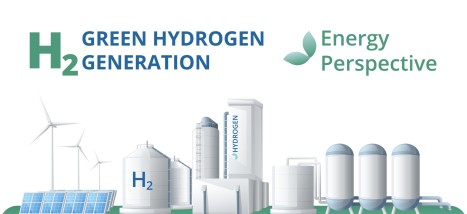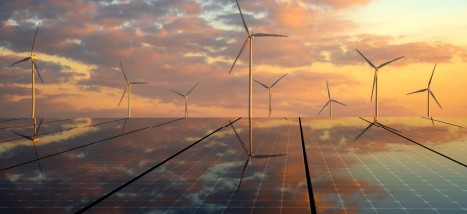-
27 September 2021

The payback period of a wind turbine: less than a year
Wind turbines cost more energy than they produce: it's a claim that comes up with some regularity. But it's not right. Wind turbines are actually very profitable. The payback period is less than a year.
How do you calculate the payback period of a wind turbine?
The basic sum for consumption is simple. You calculate how much energy a wind turbine consumes during its life cycle and how much it generates. The payback period is the number of months until delivery equals consumption. We are talking here about the modern wind turbine, as we have known it since the beginning of the twentieth century. These wind turbines convert wind into energy using a generator.How much energy does a wind turbine cost?
You determine consumption on the basis of three phases: construction, maintenance and demolition. Material is required for construction, transport to location and finally assembly. That all costs energy. Once the wind turbine is up and running, the energy costs continue to rise due to maintenance. And finally, you also have to deal with the maximum lifespan: breaking down also costs energy. These factors together determine the total energy consumption of the wind turbine.'The average payback time for a wind turbine is 23 weeks, according to research.'
How long does a wind turbine have to run for that?
Those calculations are complex. But the Intergovernmental Panel on Climate Change (IPCC) already looked into it in 2011. Scientists compared dozens of life cycles of wind farms and turbines. What turned out? Each study showed that a wind turbine pays for itself within a year of its energy consumption. On average, this was even slightly more than 23 weeks, so less than six months.* Since then, wind turbines have only become more efficient. Moreover, they are lasting longer and longer, up to more than thirty years. So that equates to 29 profitable years.Is there a difference in payback time between land and sea?
Offshore wind farms cost more energy on average, because the construction is more complex than onshore wind turbines. They also usually require more maintenance. On the other hand, the wind blows relatively hard on the open sea. The same goes for other open spaces, such as a lake. The best locations are free of trees or buildings that inhibit the wind. What also plays a role is the height of the wind turbine, the surface of the blades and whether other wind turbines in the park do not impede the wind.Do those 29 profitable years also apply to mini wind turbines?
New. In fact, mini wind turbines, small wind turbines that are used for small-scale power generation, are usually not profitable. So when it comes to the mini wind turbines, the skeptics are right. Sometimes they are necessary in remote areas that do not have an electricity grid. Or do people want to generate green energy themselves from a sustainable point of view. But there are better alternatives to contribute to the environment, for example by investing in wind energy.'A wind turbine emits 34.1 grams of CO2 per kWh, a coal-fired power station 900 grams of CO2 per kWh.'
Does cost-effective also mean better for the climate?
The more wind turbines, the more green electricity. And the more green electricity, the less electricity from fossil fuels. And it pays off. Professor of energy policy Benjamin Sovacool, also director of the Danish Center for Energy Technology, investigated the average emissions of a wind turbine in 2014: about 34.1 grams of CO2 per kWh of electricity. At a gas-fired power station, this is 490 grams. A coal-fired power station is the most polluting: there it is even an average of 900 grams. So wind turbines have a clear advantage.*report IPCC, page 540, 571
-
25 March 2025
 Green hydrogen can contribute effectively to emissions reductionBy: Evertjan van Roekel
Green hydrogen can contribute effectively to emissions reductionBy: Evertjan van RoekelGreen hydrogen often, but certainly not always, leads to CO2 gains. This is evident from research in Nature Energy by Kiane de Kleijne of Radboud University and Eindhoven University of Technology. 'If you calculate the entire life cycle of green hydrogen production and transport, the CO2 gain can be disappointing. But if green hydrogen is produced from very clean electricity and in the region, it can really contribute to emission reductions.'
[Read more...] -
18 February 2025
 Renewable energy investment creates great potentialBy: Evertjan van Roekel
Renewable energy investment creates great potentialBy: Evertjan van RoekelAn investment in renewable energy offers an excellent financial return and a way to put your money to work for people and the environment. Sustainable energy investments also play a crucial role in tackling the global climate problem.
[Read more...]